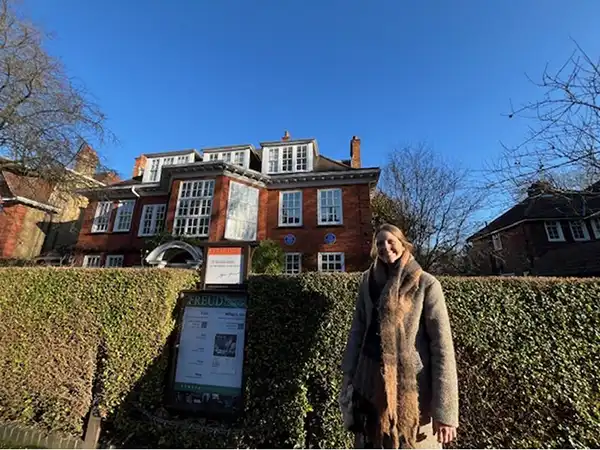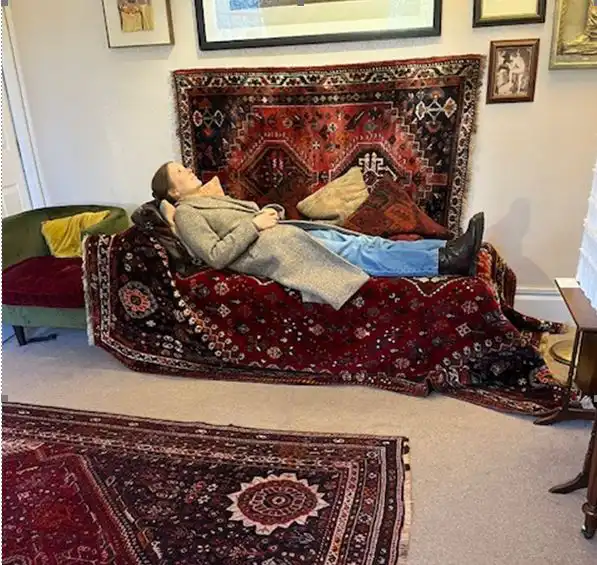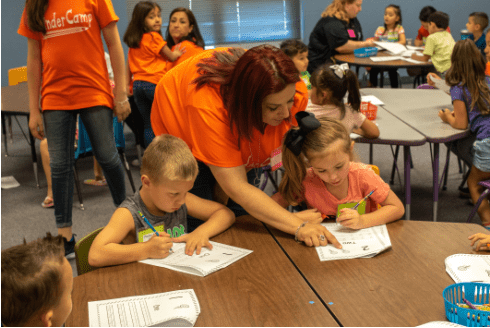
Play Therapy Certificate Inspired Visit to Freud Museum in London
In the Play Therapy Basics course, students learn that Sigmund Freud, founder of Psychoanalytic Theory and thought, had the first documented case of using play with children in therapy. Later, his daughter Anna Freud made significant contributions to play therapy as she was the first to recognize the importance of the relationship with children. Students are provided a virtual tour of the Freudian Museum in London, expressing hopes that they can visit someday, That someday came for Chelsey Kendall, Counseling Program graduate and current Play Therapy student, who visited The Freud Museum in London in January 2025.
Play Therapy Certificate Student Inspired to Visit Freud Museum in London
I have always been fascinated by the works of Sigmund Freud. As a psychology major, I learned about him extensively throughout my undergraduate studies at UTPB. After graduating with a Bachelor of Arts in Psychology, I returned to UTPB to pursue my master's degree in counseling. Throughout my graduate program, Freud's work was frequently referenced, and I consistently appreciated his pioneering efforts to understand human thoughts and behavior, and help people heal through therapy (as wild as some of the theories may be).
After completing my Master of Arts in Counseling at UTPB, I obtained my LPC license and began working at a local private practice in Midland. Last year, I learned that UTPB began offering a postgraduate certificate in play therapy. I knew immediately that I wanted to pursue this certificate because I enjoy working with children and wanted to learn more about how to use play as a modality for healing.  In my first play therapy class with Dr. Anderson, I learned that Sigmund Freud was one of the pioneers in play therapy. Despite years of studying Freud, I had never learned about his contributions to play therapy before. This newfound knowledge sparked my interest and deepened my respect for him as a professional and therapy pioneer.
In my first play therapy class with Dr. Anderson, I learned that Sigmund Freud was one of the pioneers in play therapy. Despite years of studying Freud, I had never learned about his contributions to play therapy before. This newfound knowledge sparked my interest and deepened my respect for him as a professional and therapy pioneer.
In this class, we took a virtual tour of Freud's office and home in Hampstead, London. This experience ignited my desire to visit the Freud Museum, which I eventually did in January 2025. The museum showcases Freud's last home and office, where he lived and worked during the final year of his life after fleeing Nazi persecution in Austria.
The museum features many of Freud's personal items including clothing, artwork, antiques, furniture, and paperwork from his psychoanalysis practice. The highlight of my visit was seeing Freud's office, especially the iconic psychoanalysis couch. To see his couch in person was so exciting. I found myself wondering about all it had experienced, and marveled at its history. I was thrilled to take a photo while lying on a replica couch, they had in the museum!
Another notable aspect of the museum is the room dedicated to Freud's daughter, Anna Freud, who continued her father's work and was a pioneer in play therapy as well. Her room features an exhibit on her work with the Hampstead War Nurseries, a refuge for children during World War II and something else I learned about in Dr. Anderson's class. One striking image is that of a child wearing a gas mask. While this image is unsettling, I see it as example of how children were given access to relevant items to process their experiences and emotions about the war.
I feel so grateful to have visited the Freud Museum. It was an exciting experience, and I definitely "fan-girled" the entire time. If you are ever in London, I highly recommend!
